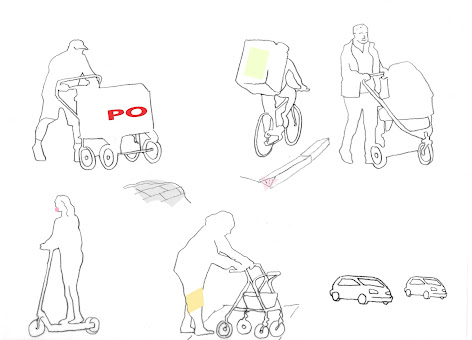09092014/In defence of pop-ups - Or why picnic urbanism?
09092014/In defence of pop-ups - Or why picnic urbanism?
Short text
written in response to an article from London UK in the Architectural Review 16th
July summer 2014, Titled “The Pop-up problem: does the obnoxious phenomenon
have hidden depths?”
So London (UK) is jaded with precious little Pop-ups. Everyone
has had enough of that kind of thing already!!
An over-dependence on these, can blind us, not only to
dysfunction, but also to the failure to engage space. Space.., it’s just
like there. Is it not? Architects, of all the disciplines, study &
understand space, its potential (even its dimensions!) & its power. They
are, if you like, space scientists.
Whereas many people and many disciplines behave as though
space is a limitless continuum (interestingly, apparently of the branches of
economics only transportation economics takes space truly into account)
architects do not. Treating space in that way is usually to miss something.
Take the summer crop of installations, festivals etc. in Ontario.
In Kitchener, even the summer rash of installations and
festivals rarely has any serious spatial import. Not even a single car park used
once, just once, for public gathering (parking does not count). Ne’er an event
with a spatial strategy to match its content. The principal downtown, and only, highly functioning public space (Victoria Park), becomes a large picnic spot, operating at capacity, grass unable to keep up unless sprinklered and, by now, wasting the vitality
of these albeit fleeting urbanisms. So often incongruous activities are yoked together in space like
incompatible roommates.
On one evening I sought out a performance piece to be
bewildered by scheduling to coincide with a major festival at City Hall &,
to outdo all crassness, the sale of Waterloos programmed little POP to a wine and
nibbles evening that being of such a scale, would have found better
location at a paid venue with grounds perhaps, than by the fencing off of what passes
for public space on the evening of the main summer festival.
So there are pop-ups and pop ups..As there are advantages
& disadvantages. It is the architectural expression of the desire for responsiveness, that holy grail "Living Architecture",
but equally it is a response that might not be sufficient for its cause.
Certainly here it is the desire for a temporally reactive architecture, & absolute
auto mobility with no constraint, whose effects we see in architecture and the
city. Everywhere the need/love of speed and fear of inertia is present,
Accelerator, Velocity bound in a desperate, exhausting rush that cannot, simply
cannot afford to stand still! This is what needs calibrating. It’s a vicious
circle too because the more unlivable (& unlovable) the city the more
& the further, people have to travel to escape. It turns out that short-term
means ill-considered, keeping up means moving the goalposts, starting over
every day or as close as possible to that.
So, this is the architectural corollary to that impulse, not
cardboard buildings that persist for years in fact or cleared (parking) lots,
or big sheds that remove the need for complexity or infrastructure (or
windows!) by including the entire of experience in one privately owned box. These
that spring up so quickly, impossibly wafer-thin in their construction,
consuming disproportionately in energy for light & heat &, in time of
drought, needing subdivision for smaller lettings. Nor is it virtuoso, techno-sophistico, responsive facades.
On that basis, roll-on the latterly popular (sic), pop-up, but let us have events & objects situated in space, so that they are as effective as possible, so they punch above their weight. Now, where to go for help with that.., we need #space _scientists!

Comments
Post a Comment